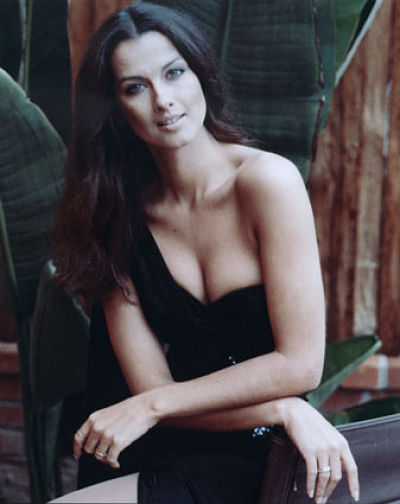I was saddened by the news of the death of the brilliant Steven Bochco, co-creator of the best cop shows ever put on TV, Hill Street Blues and NYPD Blue.
Hill Street Blues came out when I was still living in Johannesburg, and as US shows couldn’t be shown on South African TV because apartheid, my friendly local video store owner managed to get copies made in the US and smuggled into South Africa, where he transposed the episodes from NTSC into the PAL system. He recommended the pilot show to me, and I was hooked in the first five minutes. I’d never seen anything like that show before — and I suspect not many had, even in America. I grew to love the characters and watched their antics fondly each week, waiting for the call from Jim to tell me he’d finished transposing the latest episode; he knew I loved the show and as my apartment was literally across the road from his store, I’d stop over on my way back from work, grab the VHS cassette from him and watch the thing twice before returning it to him the next morning.
I had a major crush on Assistant D.A. Joyce Davenport (Veronica Hamel), and loved the way that she and Captain Frank Furillo (Daniel J. Travanti) had this antagonistic professional relationship at the precinct while having a love affair in secret. I even loved Furillo’s awful ex-wife Fay (Barbara Bosson) and how she always caused trouble for him when she came storming into the station. And I could go on and on: the relationship between cowboy cop Renko and Black cop Washington, the grumpy Belker always getting interrupted at critical moments by phone calls from his mother, the silky psychopath SWAT commander Howard Hunter (James B. Sikking) and so on and so on. And like many, I mourned the real-life death of desk sergeant Phil Esterhaus (Michael Conrad), whose post-briefing “Let’s be careful out there” so often went unheeded, and so often with tragic consequences. I think the show went a little downhill after his passing.
You will understand how much I loved this show that I can still recall so many of the plot details now, some thirty years later.
Much less so was NYPD Blue, which was a grittier, more New York kind of show (as opposed to the still-rough-but-somehow-gentler Chicago South Side of HSB). Still, there were parallels: I had a huge crush on NYPD’s Assistant D.A. Sylvia Costas (Sharon Lawrence) — yes, two ADAs in two shows, go figure — but whereas HSB was mostly drama, NYPDB, made in a more permissive decade, threw in a healthy dose of sex between the characters, with actual nudity. That aside, though, whereas Hill Street Blues had been a truly ensemble show, NYPD Blue belonged lock, stock and barrel to the brilliant Dennis Franz as Det. Andy Sipowicz, whose loud, profane and irritable persona was all New York — still more remarkable when you consider that Franz was the archetypal Chicago cop. (His one-man stage show about cops in Chicago had the accolade of being the favorite stage show of actual Chicago cops, who nightly formed much of his theater audience.) There were other characters on NYPDB — good if not excellent ones — but Franz owned the place.
Anyway, as Readers other than of my own vintage won’t know what the hell I’m talking about here, I’m going to resort to pictures, first of ADA Joyce Davenport and then her New York counterpart, ADA Sylvia Costas.

Finally, here’s a totally-gratuitous pic of NYPDB‘s Det. Diane Russell (Kim Delaney), so everyone can see what I’ve been talking about:

R.I.P. Mr. Bochco, and thank you for the Blues.
“Sit, Ubu.”

“Hill Street Blues” was the most original TV show in at least a decade. Cop shows of the 1970s were along the lines of “CHIPS” or “Starsky and Hutch”: fine pablum to take up an hour, but unchanging week in and week out. “Formulaic” was a perfect description, and it was not a compliment. And the supporting characters were just there to move the story along for the main guys. HSB changed all that in the early 1980s, and TV is still (blissfully) following that model. Every “minor” character has their own story and their own arc, and you never know if they’ll make it to the next episode. IIRC, Michael Conrad’s real-life death was written into the series as Esterhaus’ death in bed. And not in his sleep, if you know what I’m saying.
So, what think ye of “Blue Bloods”.
Talk about serendipity: On Saturday mornings, the local “Oldies” station rebroadcasts the classic “American Top 40” shows from the 70s and 80s for whichever particular week it happens to be. This week, Casey Kasem was spinnin’ the hits from 1987. In this week in 1987, Hill Street Blues aired its final episode, and Casey played the show’s theme in its entirety. It was a delightful throwback to the days when TV shows had actual theme songs that were tailored to what you were about to see. Back in the day, Mike Post and Steve Carpenter ruled the roost for TV themes. Along with “Blues” (Hill Street and NYPD), they created the themes for “Rockford Files”, “Greatest American Hero”, “The A-Team”, “Quantum Leap”, and “L.A. Law”. Just to name a few. Here’s HSB as it aired in the middle of its run:
https://youtu.be/PjVelAcJSY4
Yes, yes and yes… on all three lovely ladies and a lot of us had a crush on Veronica Hamel especially when she and Travanti, Davenport & Furillo would slip out during the day to a hotel for a nooner. That was special cast and time in TV when it was real entertainment and Kim, your story about how you followed the series in South Africa is great.
Do you remember that Joyce Davenport referred to Furillo as Pizza Man because “he delivers”? lol.
Hill Street Blues instantly blew away every previous cop show. Just like you, we in the US recognized it as not just a new show, but an entirely new way of filming cop dramas. Also a far, far better way. It became one of our ‘must watch’ shows as soon as the first episode finished, and almost never disappointed. Also, although I didn’t remember the character’s name, ‘psycho SWAT team commander’ is how I’ve thought of him ever since we first got to know him.
Hill Street Blues was probably the first TV show I followed. It will inexorably always be liked in my mind to Dr. Pepper and Oreo cookies.. let me explain. When it came out, I was a very young PFC stationed in Alaska in a MI detachment.
The only one guy on our floor that had a TV was a sergeant with the interrogators. He was more like Sgt Shultz personality wise, and a true geek, our most fluent Russian linguist, and a Morman I think. Anyway, every week we could, we’d have a Hill Street Blues watch party, eat Oreos, and drink Dr. Pepper – no beer in the Sgt’s room.. Those watch parties were one of the things that kept me sane during those long, cold, nights and the weirdness that was a MI detachment during the end of the cold war.
We were all odd ducks.. a stoner interrogator who later went a nuts and got busted, the Sgt, my CI teammate from Detroit, and another guy who I think was a radio tech.. all different as could be, but on that one night of the week, we all were just guys watching a show.. Fun times!
Sadly as is usual with these things I lost contact with all of them. Heck, I can’t even remember any names anymore, but God knows I remember every character on that show and even what ‘sit ubu’ means! Some powerful memories there.. thanks for reminding me!
Well Done, Sir.
Though I never really developed a full-blooded taste for NYPD-Blue, Hill Street was always something to watch and appreciate, and was a great segue from Miami Vice, where the sex was the cars and boats.
Have you ever seen The Package, with Franz as CPD Lieutenant Milan Delich, war buddy of protagonist Sergeant Johnny Gallagher (Gene Hackman)?
An “international thriller” shot almost entirely in Chicago, with great Chicago locations.